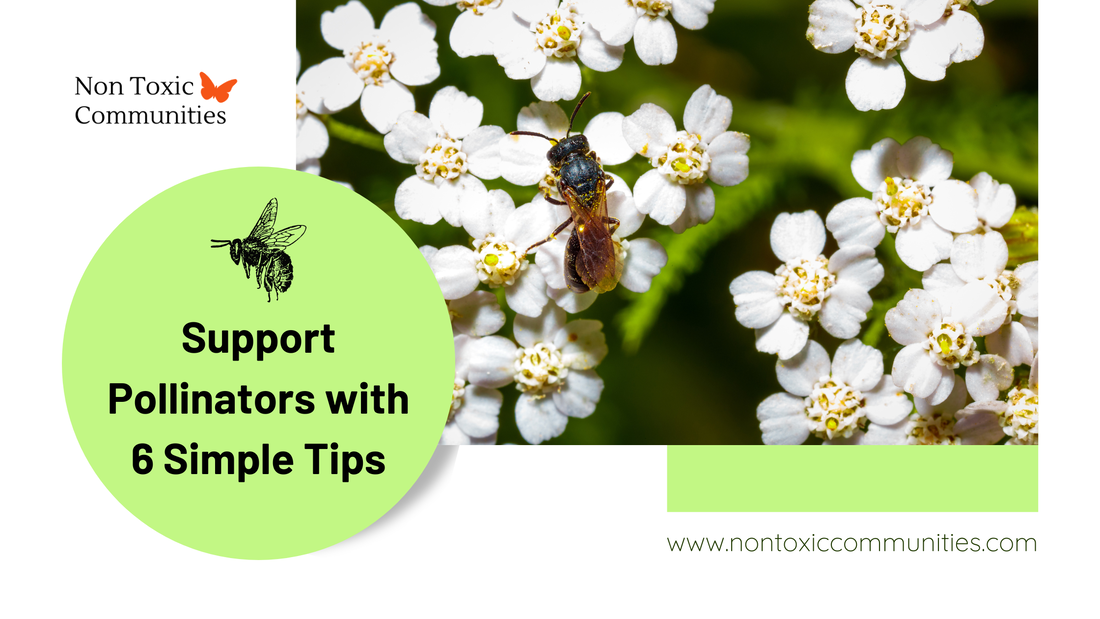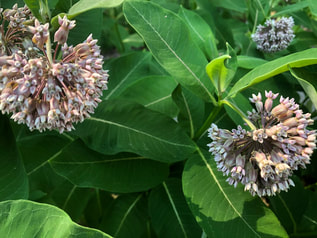|
Insect species are in trouble. Many of our 4,000 North American bee species are threatened, or even endangered. Monarch butterflies have also seen a drastic decline. Researchers have found a dramatic decline in insects worldwide. Scientists attribute this to a variety of factors – climate change, modern agricultural practices, habitat loss and pesticide use. Some of these factors are not easily addressed, while others are very much within our control. There are many things that we as individuals can do to help. What we do in our own back yards (and front yards!) can make a difference. Here are some suggestions we can all implement ourselves to assist our valuable insect populations. ✅DITCH THE PESTICIDES Pesticides are toxic to our insect friends and totally unnecessary for cosmetic purposes. If you find yourself faced with a pest problem that must be managed it is important to avoid use of products that can harm beneficial organisms in our landscapes. The vast majority of insects in your yard are helpful. They provide valuable ecosystem services that benefit us like pollination, pest control, soil aeration, nutrient recycling and more. Organic IPM is a least toxic way of managing pests. There are five main steps. First, identify the pest. Second, learn about the pest’s biology. Third, determine the level you are able to tolerate. Fourth, modify your habitat to deter the pest. Fifth, monitor pest abundance and damage, if any. Often times after following these steps, control measures are not needed. Some least toxic controls include exclusion, traps, handpicking, vacuuming, water sprays, and judicious pruning. If a pest still remains above tolerance levels after implementing these options, then an organic compatible product may be considered. This would include OMRI certified and minimum risk (FIFRA 25(b) exempt) products. Follow all label directions exactly to avoid harming beneficial and non-target organisms. See Help for Homeowners for more information. ✅ PLANT NATIVE When planning your garden, choose varieties of trees, shrubs, flowers and grasses that are native to your region. These will help support adult pollinators with nectar and habitat, and provide food for their larval stages. Insects need these host plants to be able to breed and increase their numbers. They will require less water and be more resistant to pests and disease than exotic imported ornamental plants. The caterpillars the plants host are food for baby birds. Be sure to provide a variety of flowers and bloom times. The greater the diversity of native plants, the more native pollinators they can support. Avoid cultivars of natives and opt for the straight or wild species. For example, you want to purchase Asclepias tuberosa, not Asclepias tuberosa 'Ice Ballet.' Your state's native plant society can help you find plants. Be sure plants you purchase have not been treated with any systemic pesticides like neonicotinoids or fungicides. ✅ LEAVE THE LEAVES Insects need leaf litter for egg laying and hibernating. A leaf free yard is not going to provide habitat to beneficial insects. Rake leaves into the “wild” areas of your yard and leave them over the winter or permanently when possible. Leave stems standing in your gardens over the winter. Birds eat the seed heads and insects nest in stems to hibernate. Fireflies nest in the ground and lay eggs in rotting logs. Leave a few to decompose in your garden. If you must clean up some areas in spring, wait until temperatures are reliably in the 50’s during the day, this is usually around mid to late April. Simplify your fall leaf cleanup routine, and you can enjoy a more diverse beneficial insect population visiting your garden. Allowing dead trees (even just portions of them if they pose a danger of falling) or limbs to stay where they are can also provide year round habitat for certain bee species. ✅ USE POLLINATOR FRIENDLY LANDSCAPING PRACTICES In addition to being highly polluting and disturbing neighbors and wildlife with excessive decibel levels, leaf blowers high winds damage topsoil and disturb insect habitat. Pollinators are just one of many good reasons to just say no when it comes to these machines. A pollinator friendly yard and leaf blowers don’t mix. Choose hand powered or electric equipment whenever possible. Never use lawn chemicals - organic lawns look good and are cheaper and less work to maintain. Dandelions, violets and clover are good grass companions, and they provide benefit to pollinators as well. Violets are the host plant for fritillary butterflies, and clover attracts tiny stingless beneficial wasps that prey on garden pests. Learn more about organic land care on the Northeast Organic Farming Association (NOFA) website. ✅ TURN OUT THE LIGHTS Pollinators are negatively affected by artificial outdoor lighting. Helping is a simple as flipping a switch. Set lights on a timer if needed, or install motion activated lights to reduce the impact on beneficial insects. ✅ PROVIDE A WATER SOURCE Kind of a no-brainer, yet frequently overlooked is providing a water source for insects. It’s as simple as putting out a shallow dish with some glass gems, large gravel, or rocks inside. Some people have even used sea glass. This will keep bees and other insects from drowning while they hydrate and it looks great too. Just remember to clean and fill on a regular basis.
We hope these tips will get you started in helping out our important insect friends! Comments are closed.
|
Archives
March 2024
Categories |
|
Non Toxic Communities is a 501 (c) (3) charitable organization
Nontoxic Communities Foundation, Inc. dba Non Toxic Communities Copyright © 2024 Non Toxic Communities - All Rights Reserved Site design by Bee Rooted | About Us | Contact Us |







 RSS Feed
RSS Feed
